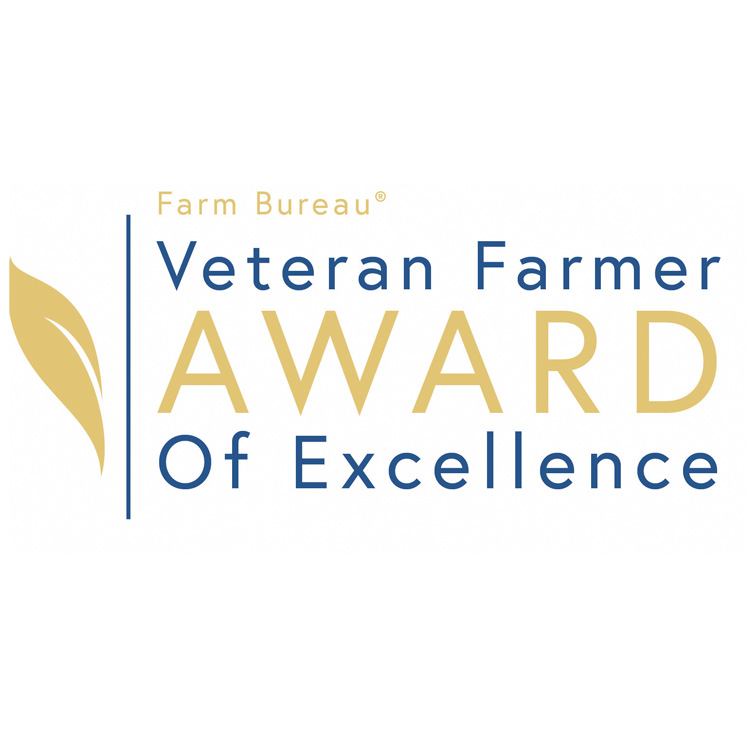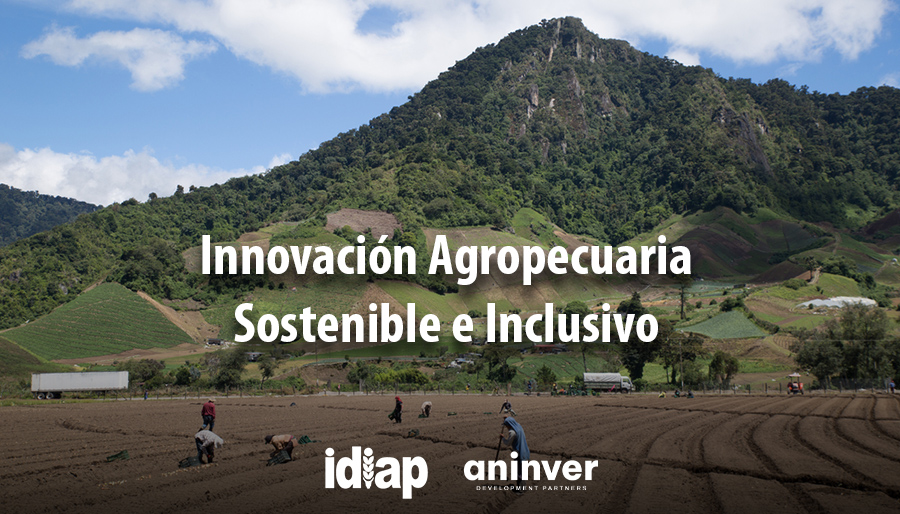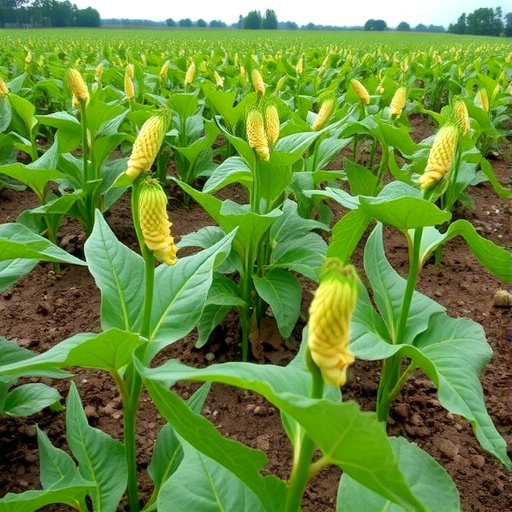Farm Bureau Announces Top 10 in Ag Innovation Challenge – American Farm Bureau Federation

Report on the 2026 Farm Bureau Ag Innovation Challenge and its Alignment with Sustainable Development Goals
Executive Summary
The 2026 Farm Bureau Ag Innovation Challenge, a partnership between the American Farm Bureau Federation (AFBF) and Farm Credit, has identified ten semi-finalist enterprises to compete for $145,000 in startup funds. This initiative serves as a critical platform for advancing agricultural innovation, directly contributing to the achievement of multiple United Nations Sustainable Development Goals (SDGs). By fostering entrepreneurship and technological advancement, the Challenge addresses global issues of food security, economic growth, and environmental sustainability.
Contribution to Sustainable Development Goals (SDGs)
The Ag Innovation Challenge is fundamentally aligned with the 2030 Agenda for Sustainable Development. Its structure and objectives support progress across several key SDGs:
- SDG 2: Zero Hunger: The core mission of the Challenge is to foster innovations that enhance agricultural productivity, improve food security, and promote sustainable farming practices to feed a growing global population.
- SDG 8: Decent Work and Economic Growth: By providing seed funding and a platform for rural entrepreneurs, the initiative stimulates economic growth, supports small-scale enterprises, and creates new opportunities for decent work within the agricultural sector.
- SDG 9: Industry, Innovation, and Infrastructure: The Challenge is a direct catalyst for SDG 9, encouraging the development of resilient agricultural infrastructure and fostering a culture of innovation to solve industry-wide problems.
- SDG 12: Responsible Consumption and Production: Many of the competing innovations focus on creating more efficient and sustainable production patterns, aiming to reduce resource use, minimize waste, and improve environmental outcomes.
- SDG 17: Partnerships for the Goals: The event exemplifies a multi-stakeholder partnership, bringing together the AFBF, Farm Credit, and corporate sponsors like Bayer, John Deere, Farm Bureau Bank, Farm Bureau Financial Services, and T-Mobile to achieve shared sustainability objectives.
2026 Semi-Finalist Cohort
Ten innovation-driven enterprises have been selected as semi-finalists. These teams represent a broad spectrum of agricultural technology and business models, each with the potential to advance the SDGs. The semi-finalists will participate in a virtual pitch round.
- Agriwater (Illinois)
- CryoBio, Inc (New York)
- FarmSmarter.ai (Louisiana)
- Gather Agriculture, Inc (California)
- KinnanFAB (Nebraska)
- KiposTech (Pennsylvania)
- Renner Ag Solutions (Iowa)
- Terraform Tillage (Iowa)
- Verility, Inc (Indiana)
- Vivid Machines (Washington)
Competition Structure and Timeline
The competition proceeds in two stages, culminating in a live event at the AFBF Convention. This structure ensures rigorous evaluation and provides significant exposure for the finalists.
- September 10: Announcement of four final-round teams, each receiving an initial $10,000.
- January 12: The four finalists will compete live at the AFBF Convention.
- Final Awards:
- Farm Bureau Ag Innovation Challenge Winner: $100,000 (total prize)
- Farm Bureau Ag Innovation Challenge Runner-Up: $25,000 (total prize)
Now in its 12th year, the Ag Innovation Challenge continues its legacy as the first national business competition of its kind dedicated to supporting rural and agricultural entrepreneurship, reinforcing a long-term commitment to sustainable development in the sector.
1. Which SDGs are addressed or connected to the issues highlighted in the article?
-
SDG 2: Zero Hunger
The article focuses on the “Farm Bureau Ag Innovation Challenge,” which aims to foster new businesses and technology in agriculture. Innovations in agriculture are crucial for achieving food security, improving nutrition, and promoting sustainable agricultural practices, which are central to SDG 2.
-
SDG 8: Decent Work and Economic Growth
The challenge supports “rural entrepreneurs” and “new businesses” by providing startup funds. This directly promotes entrepreneurship, innovation, and the growth of small enterprises, contributing to sustainable economic growth and job creation, particularly in rural areas.
-
SDG 9: Industry, Innovation, and Infrastructure
This goal is at the core of the article. The event is an “Ag Innovation Challenge” for “innovation-driven enterprises.” It aims to “encourage agricultural innovation” by funding “new businesses and technology,” directly aligning with the goal of building resilient infrastructure, promoting inclusive and sustainable industrialization, and fostering innovation.
-
SDG 17: Partnerships for the Goals
The article highlights a collaboration between the American Farm Bureau Federation and Farm Credit. It also lists several other corporate sponsors like Bayer, John Deere, and T-Mobile. This multi-stakeholder partnership between a federation, a financial institution, and private companies to achieve a common objective exemplifies the spirit of SDG 17.
2. What specific targets under those SDGs can be identified based on the article’s content?
-
SDG 2: Zero Hunger
- Target 2.4: By 2030, ensure sustainable food production systems and implement resilient agricultural practices that increase productivity and production. The challenge seeks to find and fund “new businesses and technology that have the potential to bring forth a better tomorrow for agriculture,” which implies improving production systems and practices.
- Target 2.a: Increase investment… in agricultural research and extension services, technology development… The challenge itself is a mechanism for investment in agricultural technology development, offering “$145,000 in funding” to support innovative enterprises.
-
SDG 8: Decent Work and Economic Growth
- Target 8.3: Promote development-oriented policies that support productive activities, decent job creation, entrepreneurship, creativity and innovation, and encourage the formalization and growth of micro-, small- and medium-sized enterprises. The article states the challenge is the “first national business competition of its kind to cater to rural entrepreneurs,” directly encouraging entrepreneurship and the growth of new businesses with significant startup funds.
-
SDG 9: Industry, Innovation, and Infrastructure
- Target 9.3: Increase the access of small-scale industrial and other enterprises… to financial services, including affordable credit… The challenge provides access to crucial financial services for small agricultural enterprises by awarding a “top prize of $100,000” and a total of “$145,000 in startup funds.”
- Target 9.5: Enhance scientific research, upgrade the technological capabilities of industrial sectors… encouraging innovation… The entire premise of the “Ag Innovation Challenge” is to encourage innovation and support “innovation-driven enterprises” to upgrade technology in the agricultural sector.
-
SDG 17: Partnerships for the Goals
- Target 17.17: Encourage and promote effective public, public-private and civil society partnerships… The article details a partnership between the “American Farm Bureau Federation, in partnership with Farm Credit,” and further lists sponsors including “Bayer, John Deere, Farm Bureau Bank, Farm Bureau Financial Services and T-Mobile,” showcasing a multi-stakeholder, private-civil society partnership.
3. Are there any indicators mentioned or implied in the article that can be used to measure progress towards the identified targets?
-
For SDG 2 (Zero Hunger)
- Indicator for Target 2.a: The total amount of funding provided for agricultural innovation is explicitly mentioned as “$145,000.” This serves as a direct measure of financial flows to the agricultural sector for technology development.
-
For SDG 8 (Decent Work and Economic Growth)
- Indicator for Target 8.3: The number of new enterprises supported can be measured. The article identifies “10 semi-finalist teams” who will participate, with four advancing to the final round, indicating direct support for at least ten small businesses.
-
For SDG 9 (Industry, Innovation, and Infrastructure)
- Indicator for Target 9.3: The value of financial services provided to small enterprises is stated. The article mentions a “total of $145,000 in funding,” with prizes of “$100,000” for the winner and “$25,000” for the runner-up.
- Indicator for Target 9.5: The number of enterprises engaged in innovation is specified as “ten innovation-driven enterprises” selected as semi-finalists.
-
For SDG 17 (Partnerships for the Goals)
- Indicator for Target 17.17: The number of partners in the initiative is listed. The article identifies the primary partnership (“American Farm Bureau Federation, in partnership with Farm Credit”) and lists five additional sponsors, for a total of at least seven organizations collaborating. The longevity of the partnership, running for its “12th year,” also serves as an indicator of its effectiveness.
4. SDGs, Targets, and Indicators Table
| SDGs | Targets | Indicators |
|---|---|---|
| SDG 2: Zero Hunger | 2.a: Increase investment in agricultural research and technology development. | Total funding provided for agricultural innovation ($145,000). |
| SDG 8: Decent Work and Economic Growth | 8.3: Promote policies that support entrepreneurship, innovation, and the growth of small- and medium-sized enterprises. | Number of new enterprises supported (10 semi-finalists). |
| SDG 9: Industry, Innovation, and Infrastructure | 9.3: Increase the access of small-scale enterprises to financial services. | Value of startup funds provided to small enterprises ($145,000 total). |
| 9.5: Encourage innovation and increase the number of research and development workers. | Number of “innovation-driven enterprises” participating (10). | |
| SDG 17: Partnerships for the Goals | 17.17: Encourage and promote effective public-private and civil society partnerships. | Number of collaborating organizations (at least 7 listed). Longevity of the partnership (12th year). |
Source: fb.org

What is Your Reaction?
 Like
0
Like
0
 Dislike
0
Dislike
0
 Love
0
Love
0
 Funny
0
Funny
0
 Angry
0
Angry
0
 Sad
0
Sad
0
 Wow
0
Wow
0
























;Resize=805#)






















































